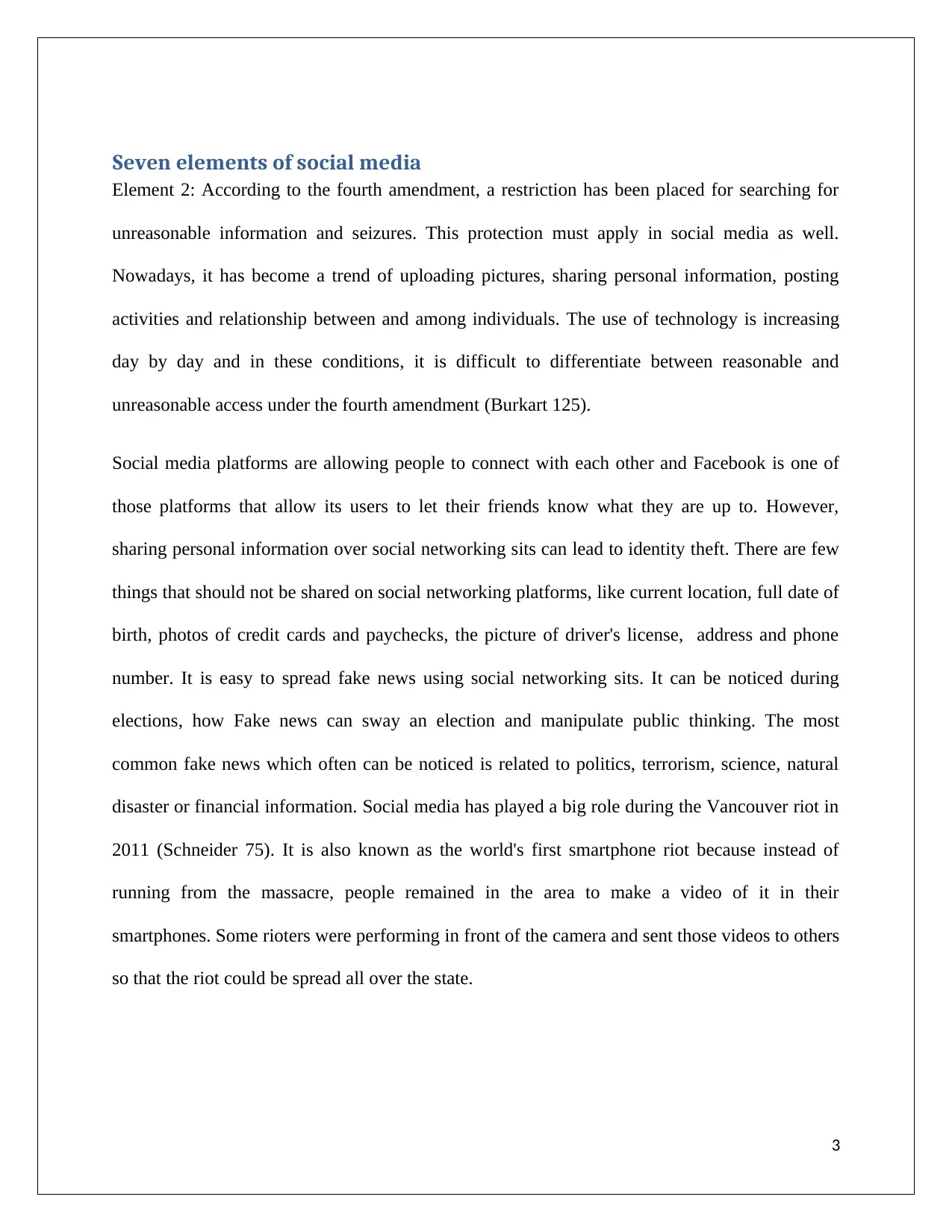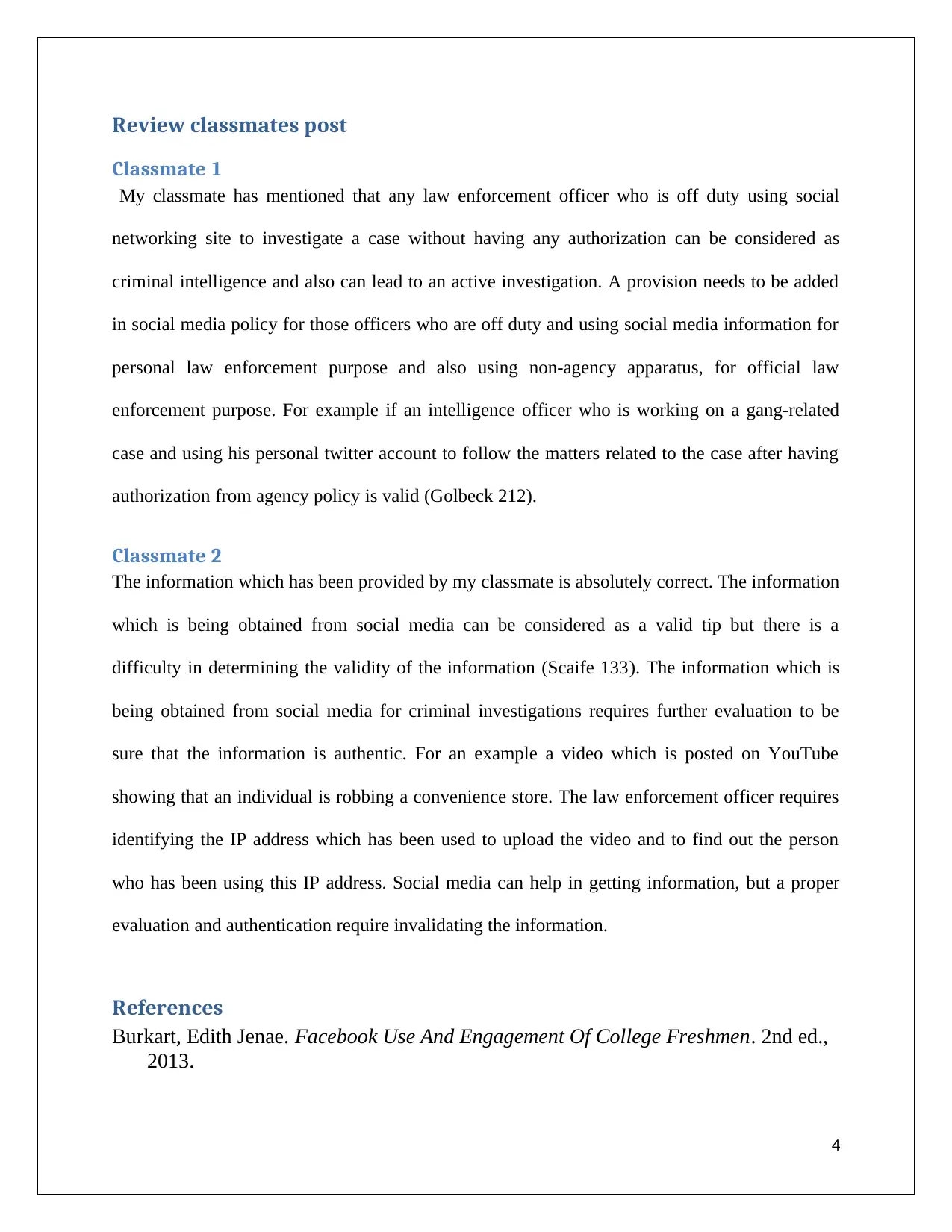Social Media Policy: Identifying Abuse Potential in Investigations
VerifiedAdded on 2023/04/22
|5
|691
|211
Discussion Board Post
AI Summary
This discussion board post addresses the potential for abuse within the seven elements of a social media policy, particularly in the context of law enforcement intelligence and investigative activities. The author identifies the Fourth Amendment's restrictions on unreasonable searches and seizures as a critical element requiring careful consideration in the social media landscape, highlighting the risks of identity theft, the spread of fake news, and the potential for misuse of social media during events like the Vancouver riot. The author also reviews and comments on classmates' posts, addressing concerns about off-duty officers using social media for investigations without authorization and the challenges of validating information obtained from social media sources. The post references provided documents to support claims and provide context to the discussion. Desklib provides solved assignments and study tools for students.
1 out of 5








![[object Object]](/_next/static/media/star-bottom.7253800d.svg)